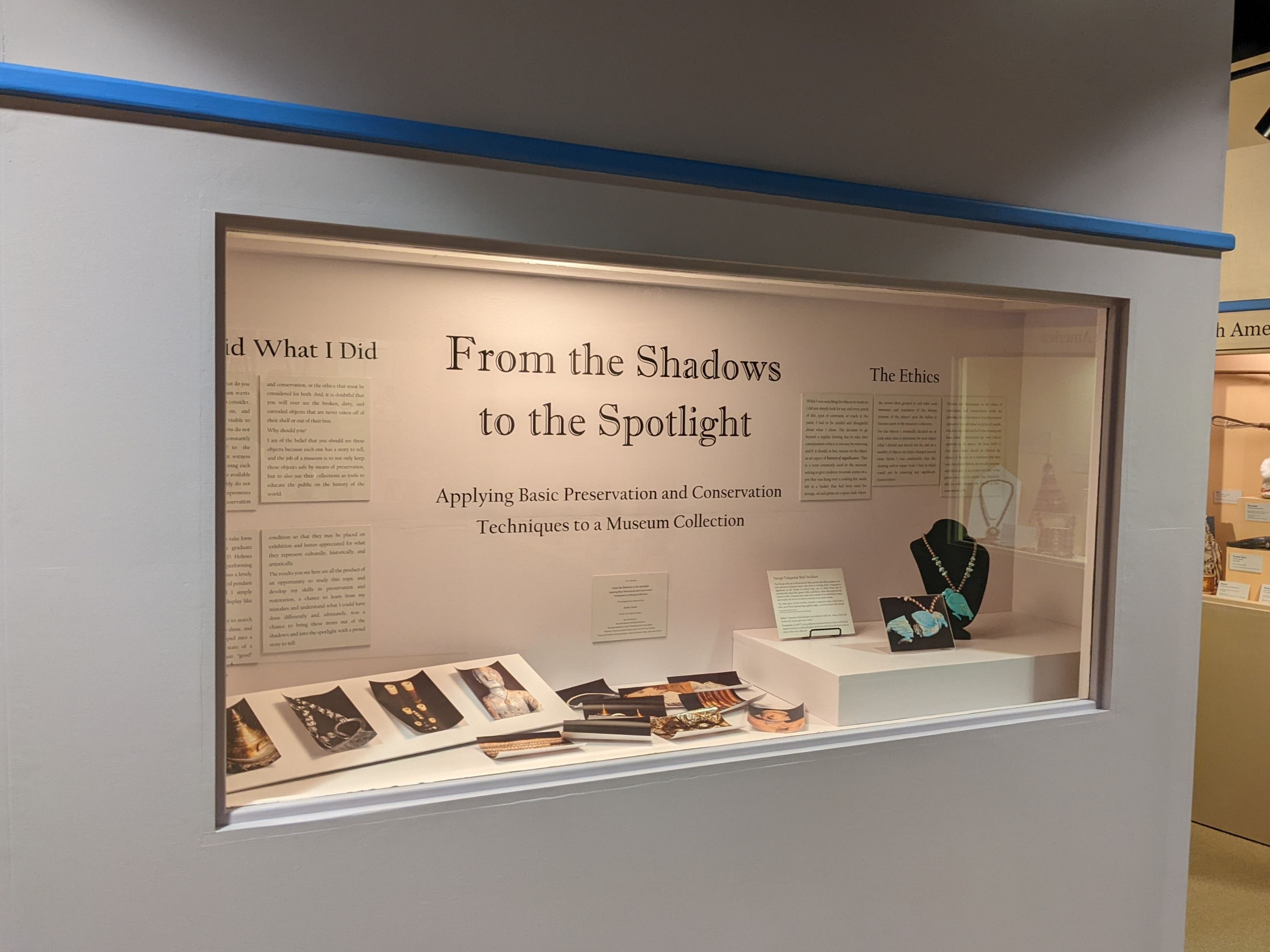Introduction
Why I Did What I Did
When you walk into a museum, what do you see? Frankly, it is what the museum wants you to see; what they want you to consider, understand, form an opinion on, and appreciate. But then, what is not visible to you in the galleries? Most likely, you do not observe all the objects that are constantly being collected and donated to the permanent collection. You do not witness the effort that goes into safely storing each and every artifact so that it may be available to future generations. You probably do not hear about the debates and compromises that take place involving art preservation and conservation, or the ethics that must be considered for both. And, it is doubtful that you will ever see the broken, dirty, and corroded objects that are never taken off of their shelf or out of their box.
Why should you?
I am of the belief that you should see these objects because each one has a story to tell, and the job of a museum is to not only keep these objects safe by means of preservation, but to also use their collections as tools to educate the public on the history of the world.
The idea for this project began to take form during my first semester as a graduate. student working in the Lowell D. Holmes Museum of Anthropology. While performing inventory inspections, I came across a lovely. necklace with a large turquoise bird pendant that was broken in half, and I simply thought, "This will never go on display like this, but I could probably fix it."
After seeing the necklace, I began to search for other items with potential to shine, and my original idea quickly developed into a mission to help improve the state of a number of objects in less than "good" condition so that they may be placed on condition so that they may be placed on exhibition and better appreciated for what they represent culturally, historically, and artistically.
The results you see here are all the product of an opportunity to study this topic and develop my skills in preservation and restoration, a chance to learn from my mistakes and understand what I could have done differently and, ultimately, was a chance to bring these items out of the shadows and into the spotlight with a proud story to tell.
The Ethics
While I was searching for objects to work on, I did not simply look for any and every patch of dirt, spot of corrosion, or crack in the paint; I had to be careful and thoughtful about what I chose. The decision to go beyond a regular dusting has to take into consideration what it is you may be removing and if it should, in fact, remain on the object as an aspect of historical significance. This is a term commonly used in the museum setting to give credence to smoke stains on a pot that was hung over a cooking fire, seeds left in a basket that had been used for storage, oil and grime on a spear shaft where the owner often grasped it, and other such remnants and reminders of the human element of the object's past life before it became a part of the museum's collection.
For the objects I eventually decided on, it took some time to determine for each object what I should and should not do, and on a number of objects my plans changed several times before I was comfortable that the cleaning and/or repair work I had in mind would not be removing any significant characteristics.
Debates and discussions on the ethics of restoration and conservation work are plentiful, but all are more or less the personal opinion of an individual or group of people, which is why I did not feel I was crossing any lines when I determined my own ethical opinions on the matter. My basic belief is that every object should be allowed the chance to be seen in a condition that best suits its cultural history, its specific purpose, and the desires of its creator and that when guests view it in an exhibit, they should be able to easily imagine the objects as they were meant to be.
Navajo Turquoise Bird Necklace
The Navajo tribe are well known for their jewelry that often combines the semi-precious turquoise stone with silver or sterling silver. Turquoise is significant to the Navajo in several ways, one of which being that it contains the colors blue, green, white, and black: colors that represent the natural world. Turquoise also came to be a symbol of an individual's status and wealth and was even used as currency at one point in time.
The main piece of this necklace features a turquoise stone carved into a bird, most likely representing a golden eagle, a sacred animal to the Navajo.
Emma and John Huff Collection
2004.05.051 Lowell D. Holmes Museum of Anthropology
Before: Turquoise bird pendant was broken in half and, where a foot had broken off, excess glue was visible.
Treatment: Used B-72 as an adhesive to reattach the two halves of the bird. Applied acetone to soften the glue on the foot and then used dental tools to remove the extra adhesive.


